When we are young, we are mostly oblivious to the things we carry or the burdens we bear. Not a child gets through childhood without shouldering the responsibilities or the feelings of someone else. It is so universally prevalent that I have come to accept this anomaly as the norm, even as I balk at the idea that that should be so. But to rail against something that ‘should not be’ when it is actually ‘the way of the world’ is plainly unproductive. My idealism gets covered over by realism.
I get a shiver of excitement when I rise in the morning, and as the light slowly wakes the day, I see the brightness of ‘snow light.’ The first substantial snow of the season fell early Monday morning and continued for the next couple of days. It was a slowly accumulating snow, lazy and small-flaked with the stingy, lingering drought. But the moisture–laden snow (thanks to the 30 degree temps) stuck to the trees, transforming the gray November to white. The sky remained cloudy and heavy when I walked the back trail—the snow was not finished with us yet.
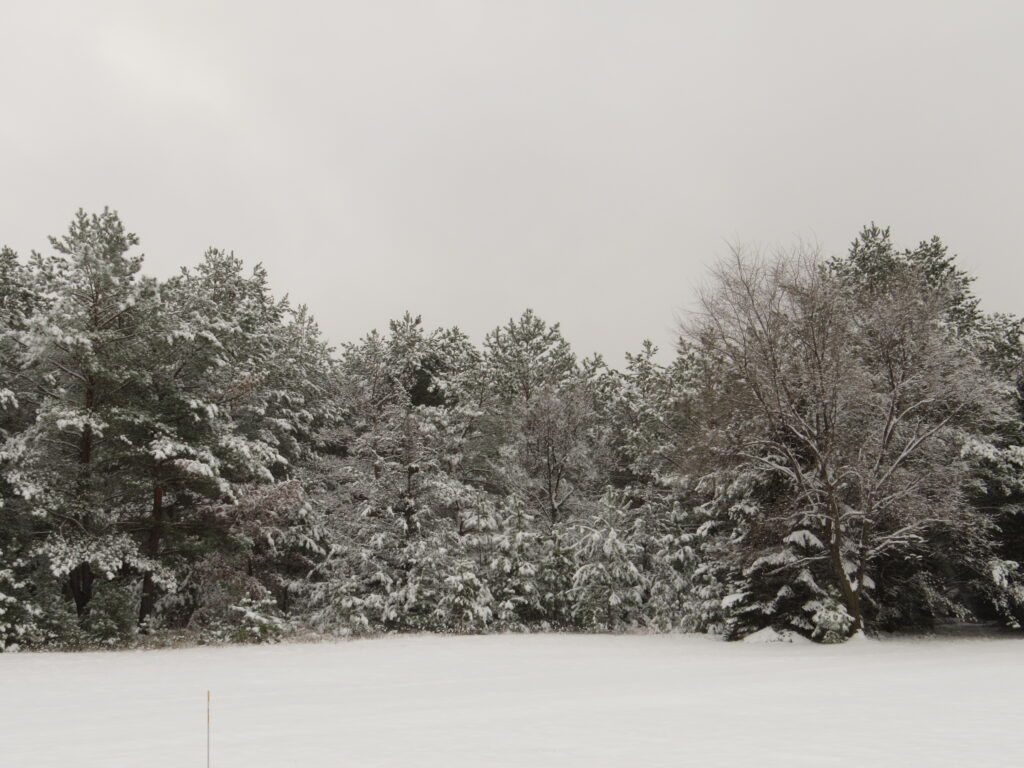
As I walked, I noticed how the different plants ‘wore’ the snow. The stiff seedheads of the Yarrow flowers each had elaborate, conical headwear, like a fluffy ermine hat fit for royals.
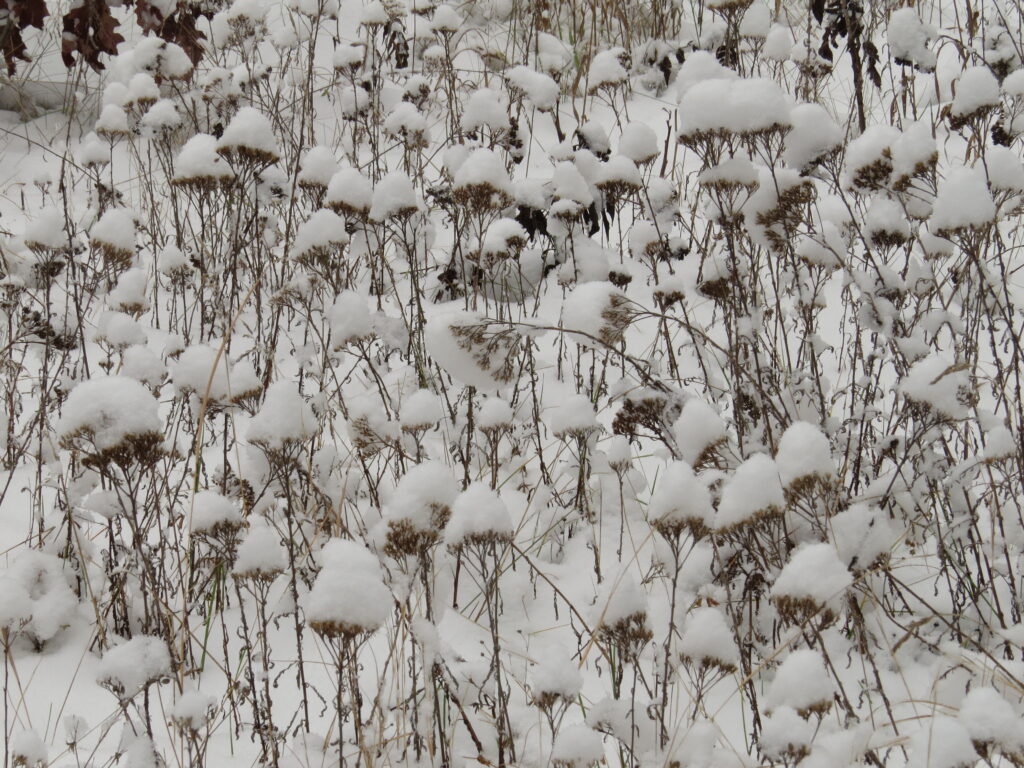
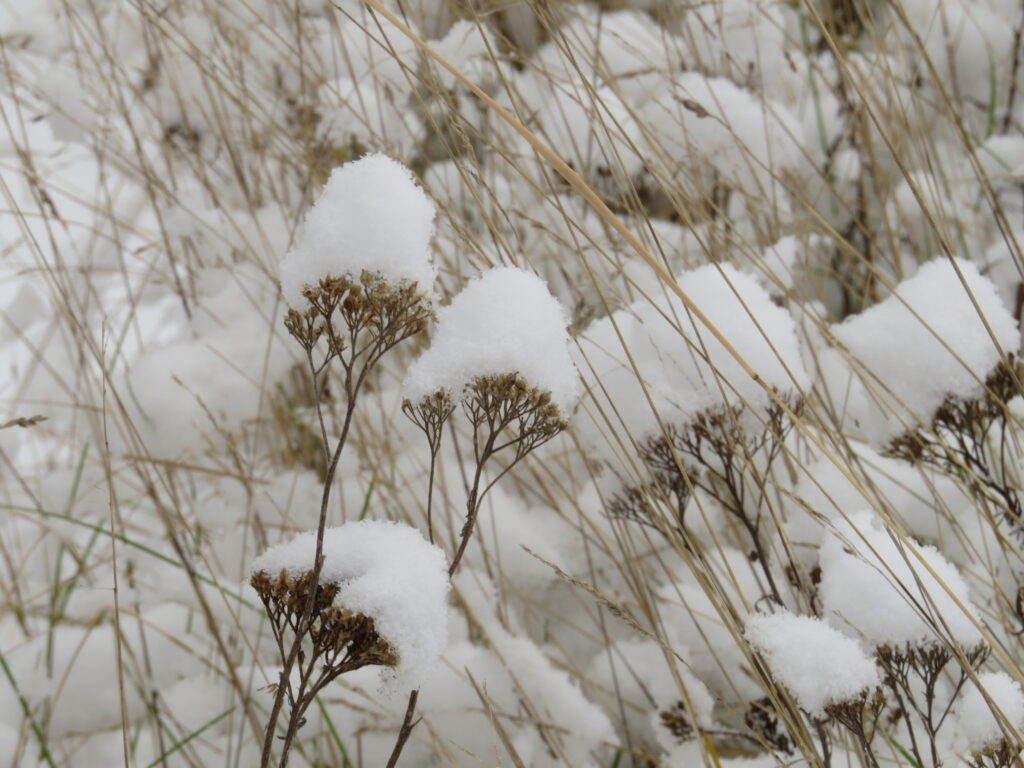
The short needles of the Jack Pine trees held little cotton balls of snow and looked like they were wearing puffy coats….
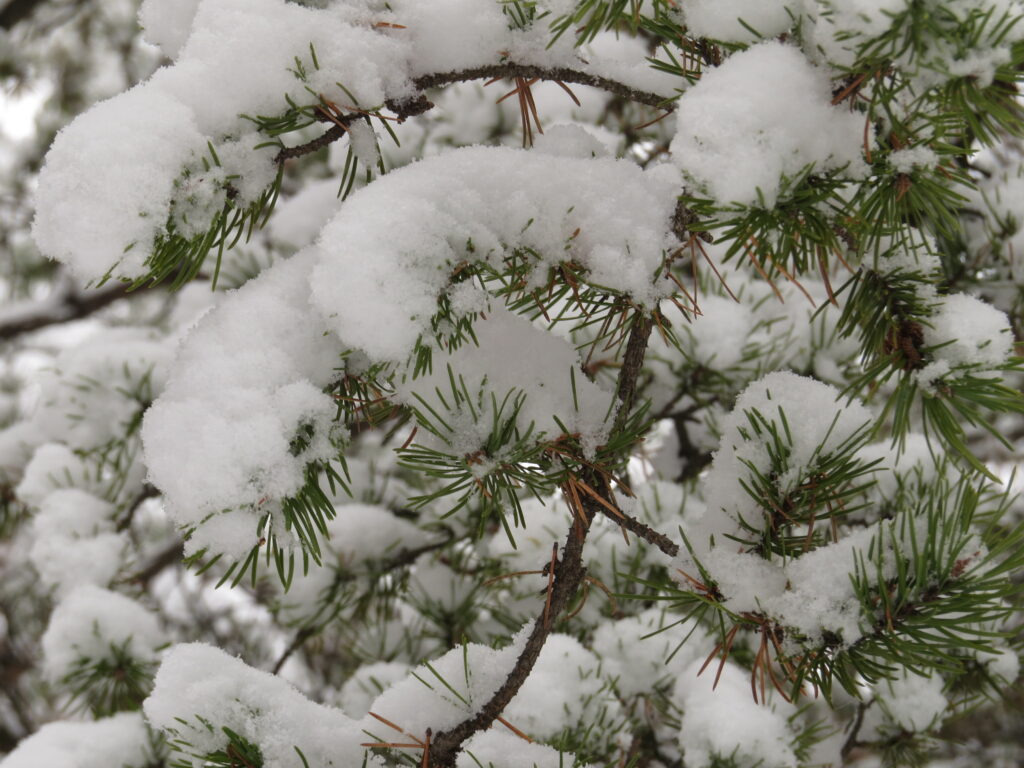
but it was a different story for the tall Jack Pine that had died the year before. Brittle branches and old cones stiffly held the snow in long lines. Some things we carry are cozy and comfortable; others should be held at arm’s length or left to die.
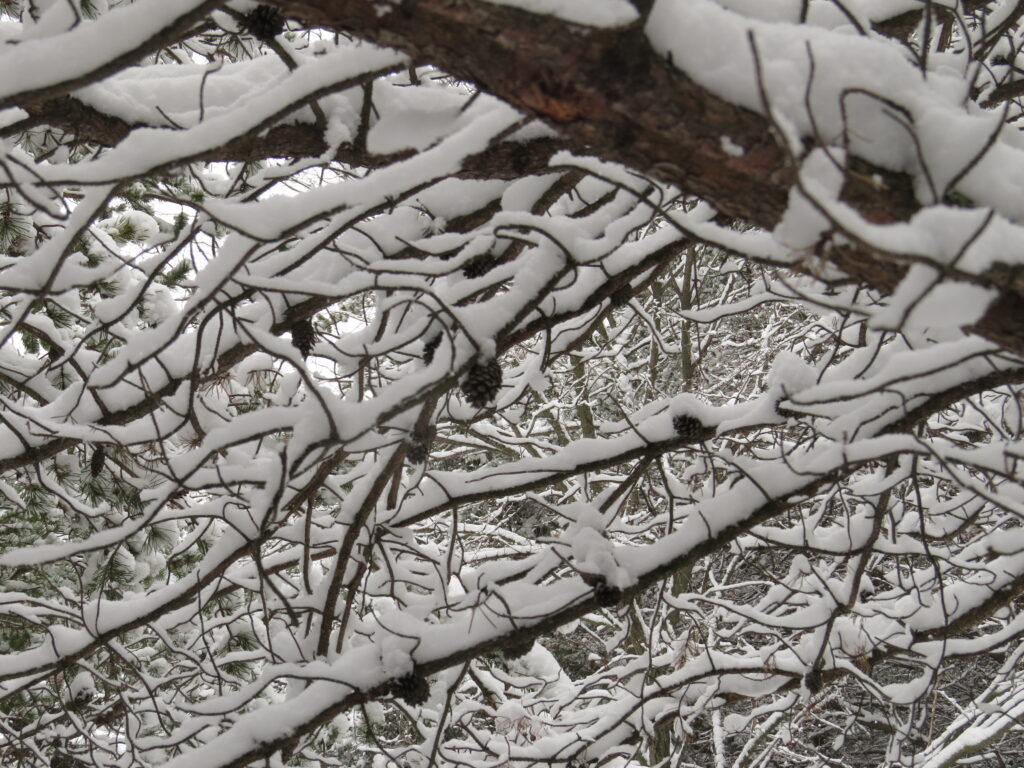
A little Eastern Red Cedar tree almost disappeared under the blanket of snow, for its young, supple branches were able to carry the load.
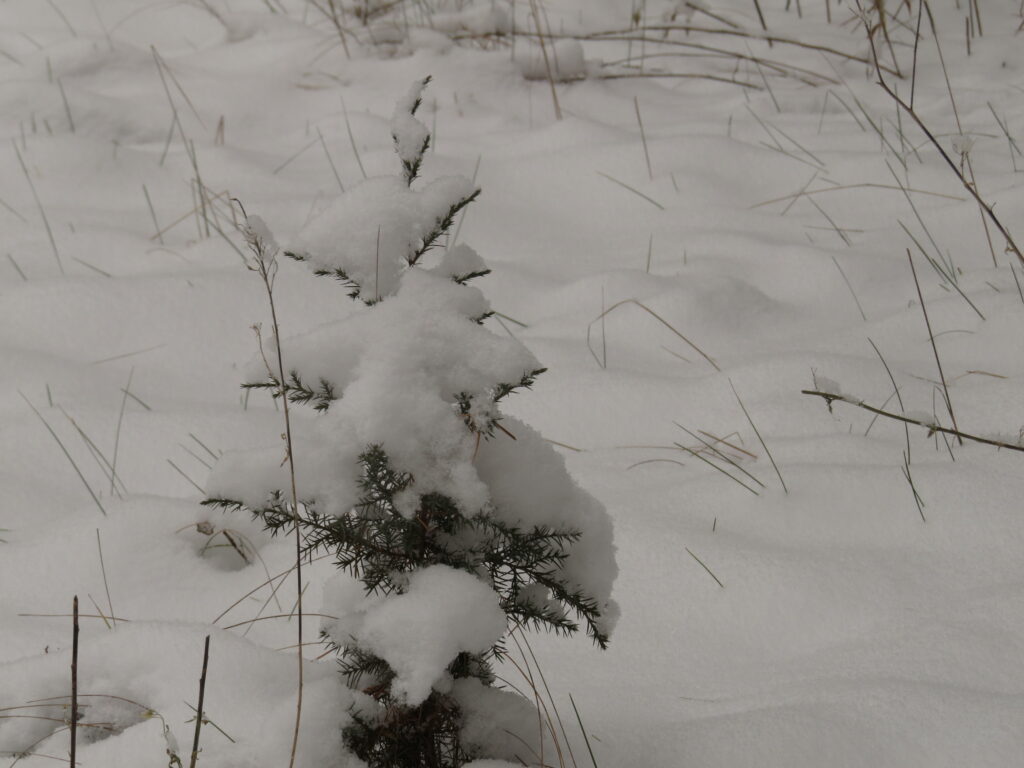
The older Cedars, still sturdy and tough, drooped with the weight of it, but were also able to bear a tremendous load of snow. Some things we carry make us strong.
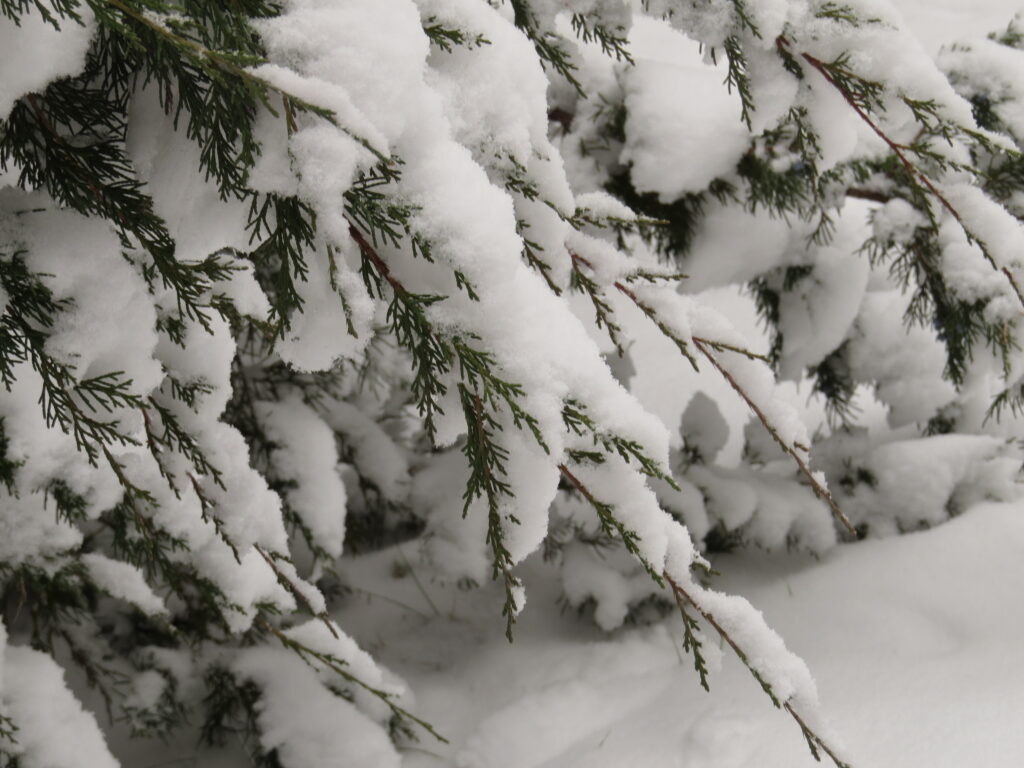
The Honeysuckles were clothed in an intricate maze of lacy white, each delicate branch outlined with snow. More pretty than heavy. Some things we carry help to make us beautiful.
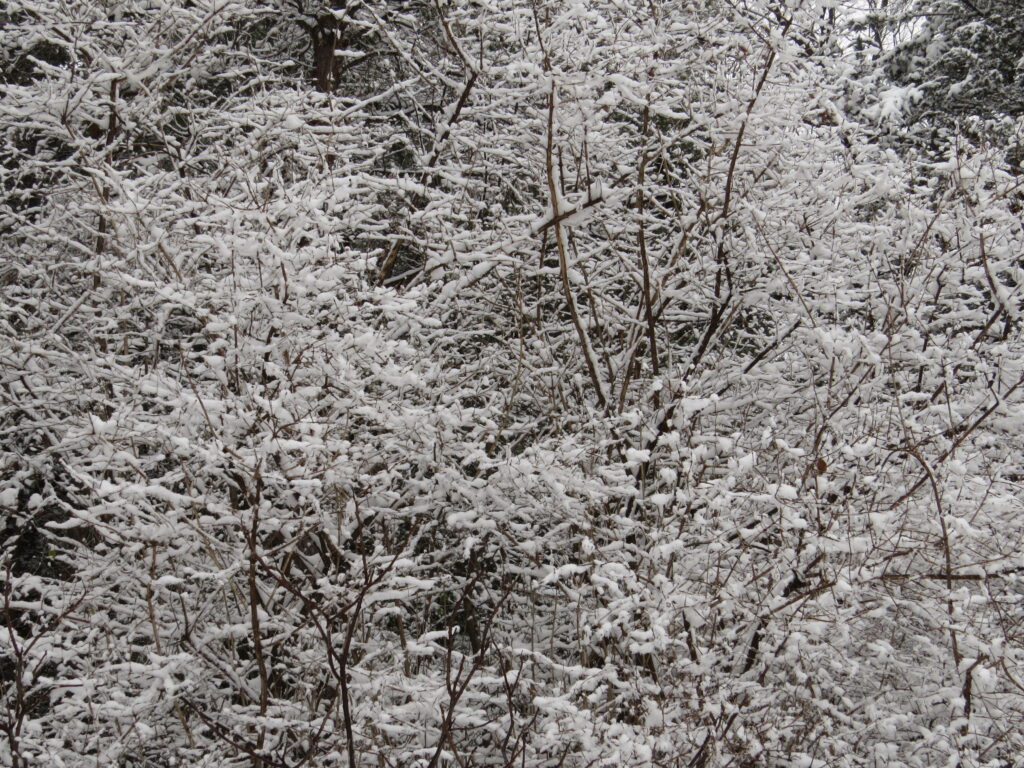
On the trail, a newly-fallen Jack Pine partially blocked the way. Green and brown needles, old cones, new cones, and dying branches held up a canopy of snow. Some things we carry are ambiguous.
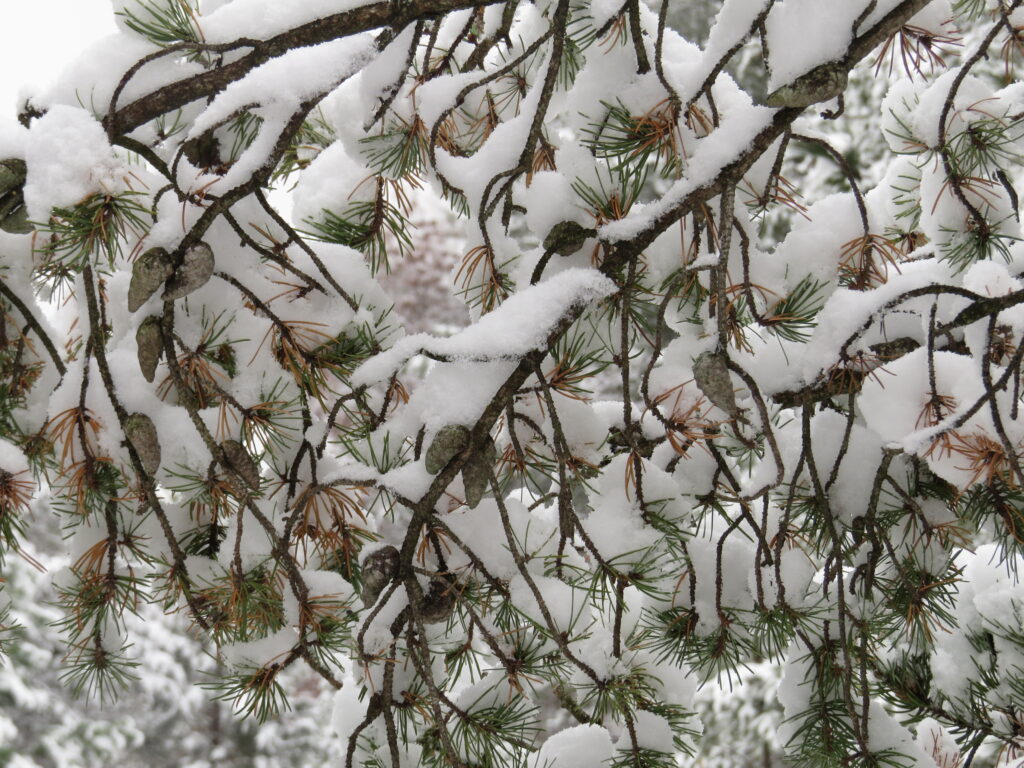
On the other side of the trail, small Sumac trees that had borne their first small flowers and fruits, were bent over from the weight of the seedhead and wore a crystal shawl. Some things we carry were ingrained at a very young age, yet protect us in a delicate way.
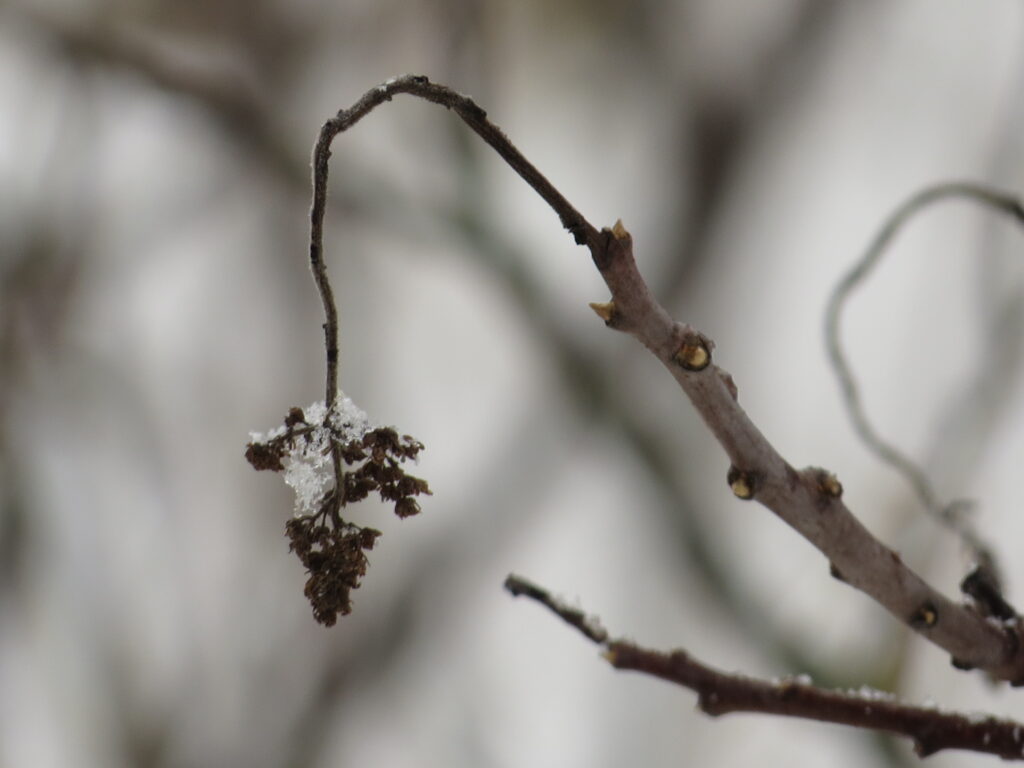
I was not the first creature to walk in the fresh snow—the deer had already made tracks down the trail (and through the yard). Their stealth visits are now recorded in snow, along with…
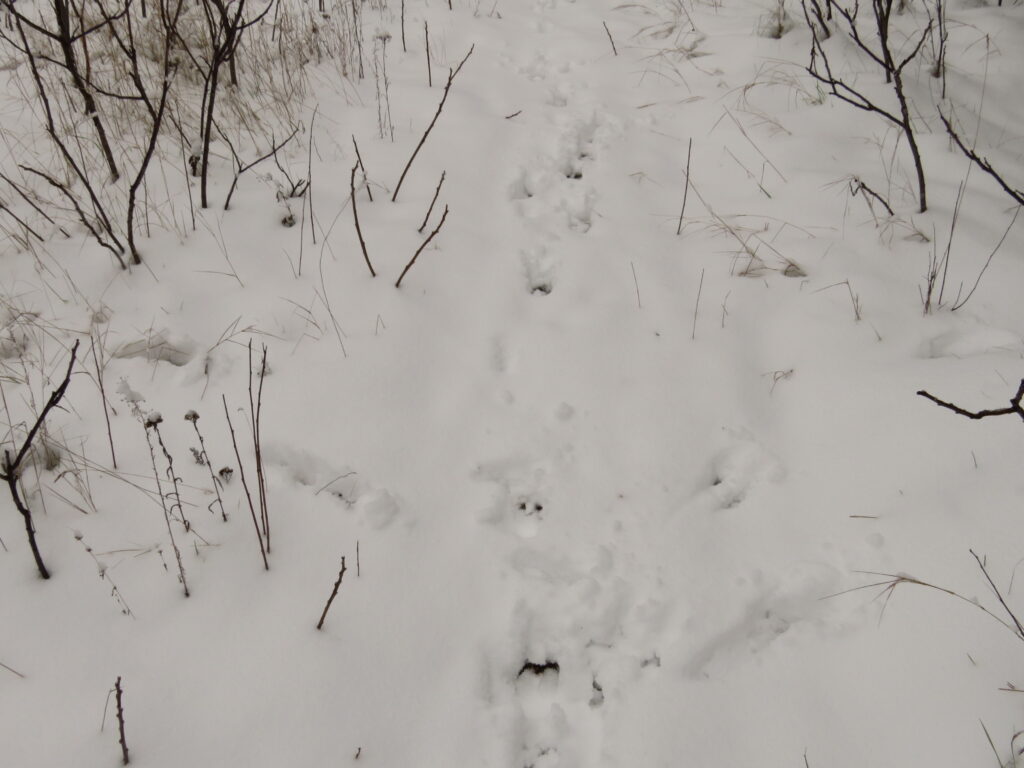
the wild turkeys…
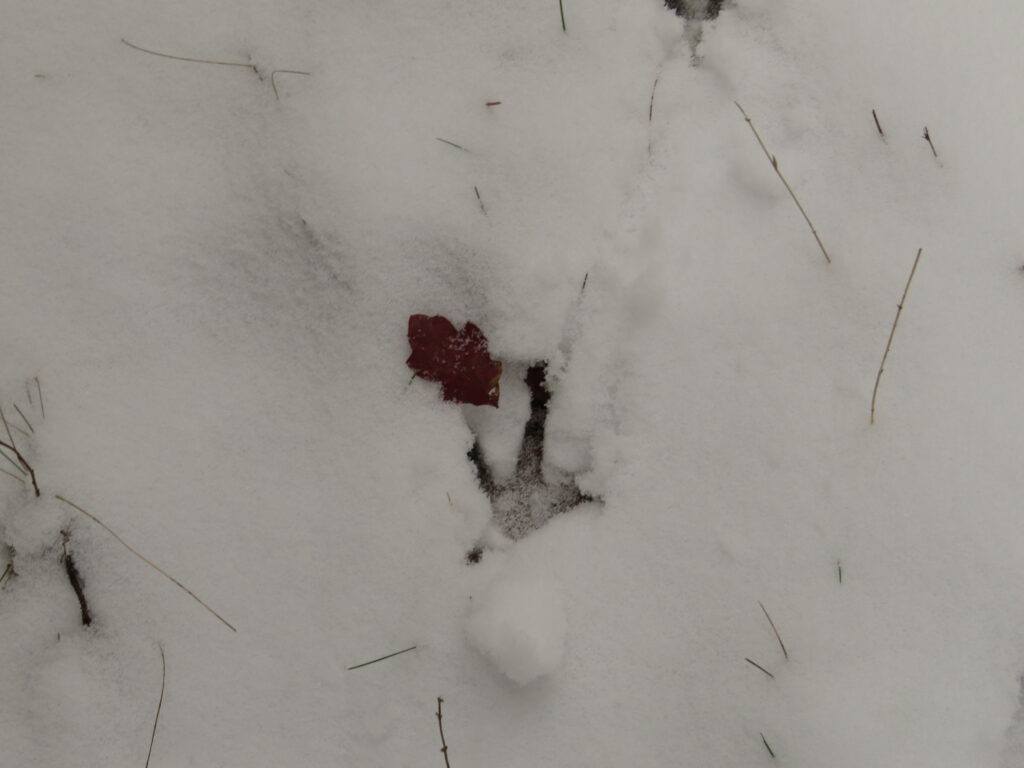
and the squirrels, all of whom dig through the snow and leaf litter to find food. With snow and burdens come accountability.
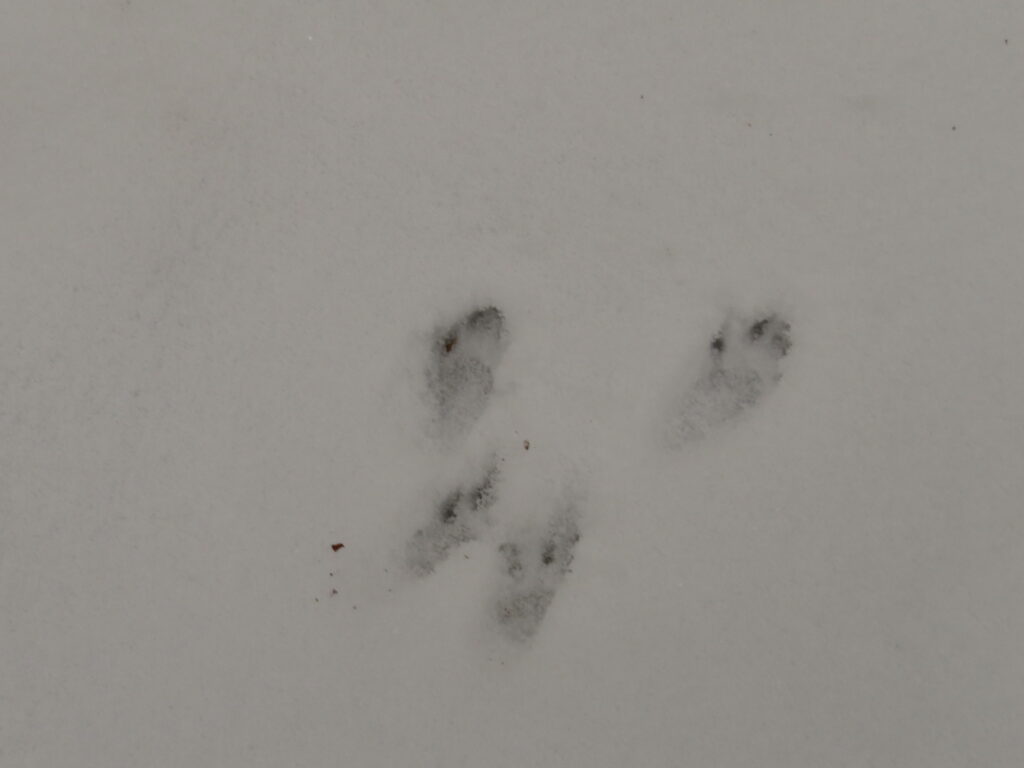
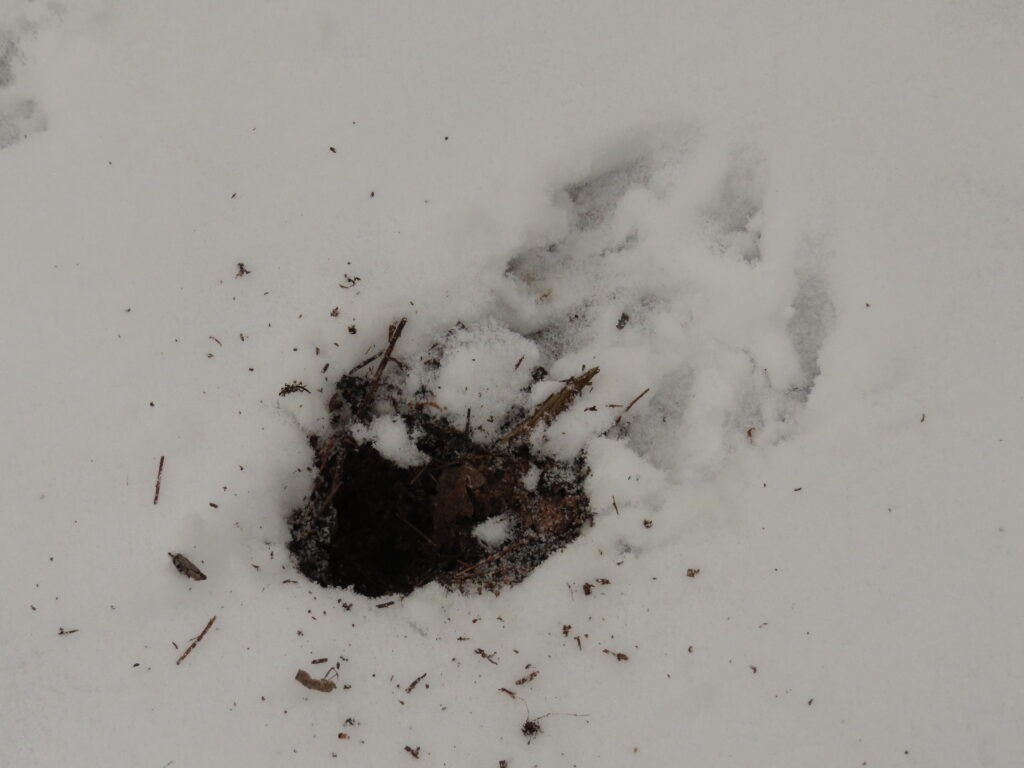
The Red Oak leaves that cling to the branches for most of the Winter are cloaked in the contrasting snow. Some things we carry become the antithesis of who we want to be.
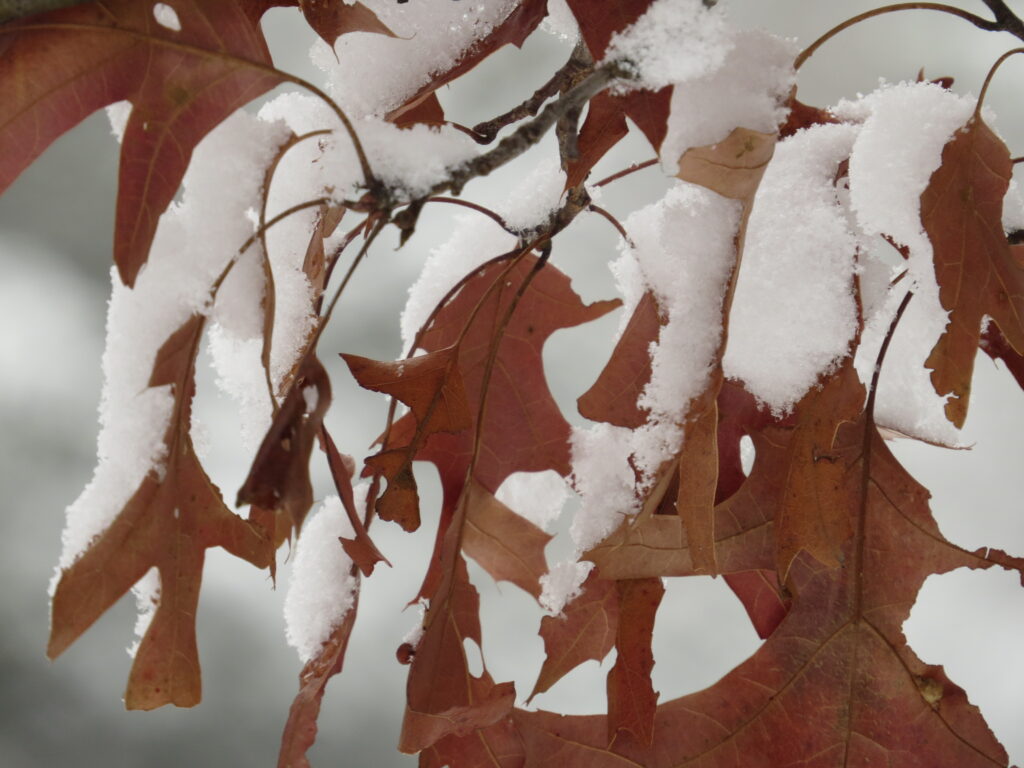
The burden of snow bent the branches over the trail, blocking the way. There was no way of passing without shaking the snow off the trees onto myself. Some things we carry block our pathway of life, covering us in ways that seem insurmountable. Part of the learning journey is figuring out how to shake it off.
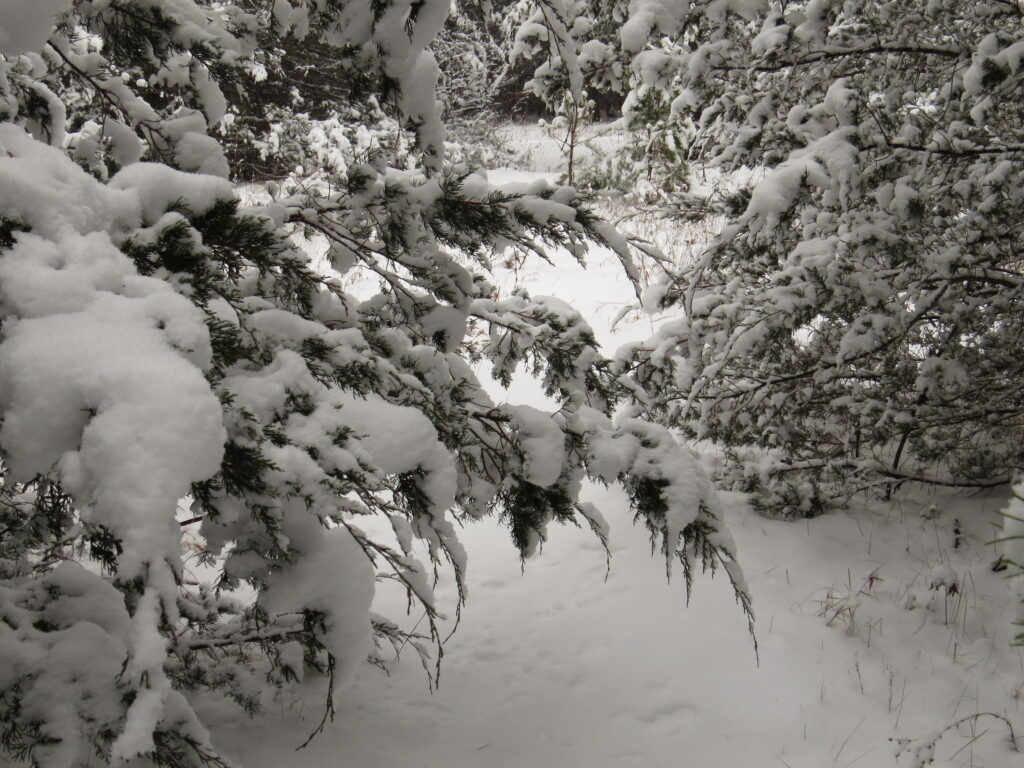
Even the spikey Mullein seedheads sport the snowy attire. Unlikely solutions can present themselves to us when we least expect it.
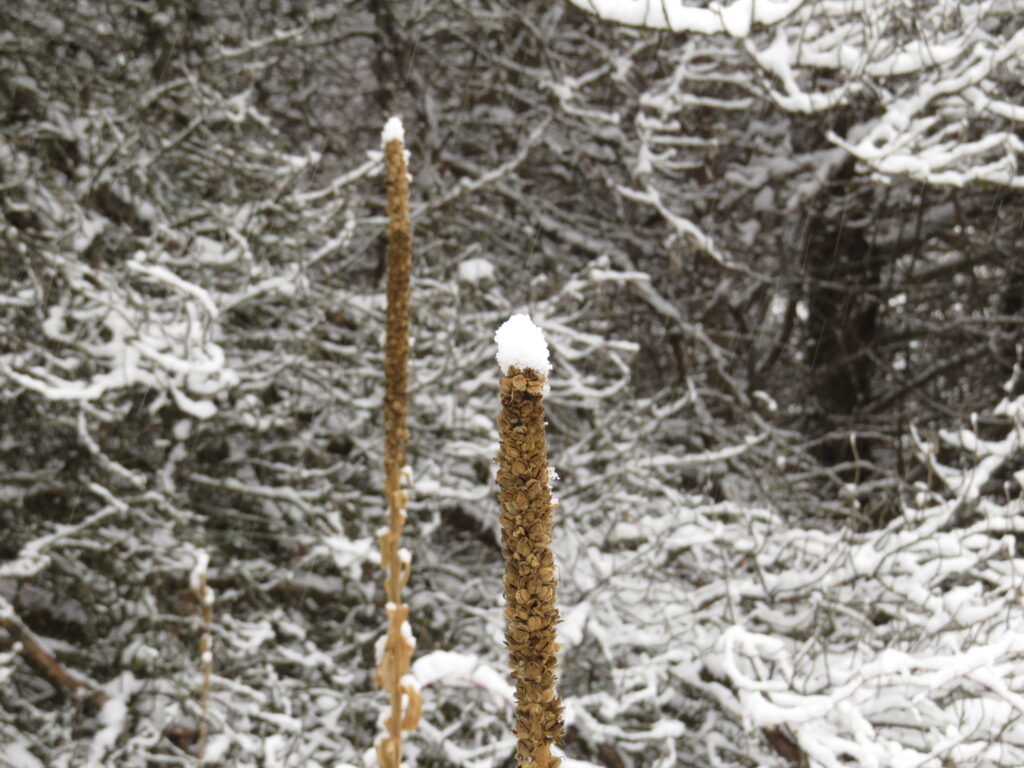
It was truly a silent Winter wonderland for me and the creatures who had passed through the woods before me.
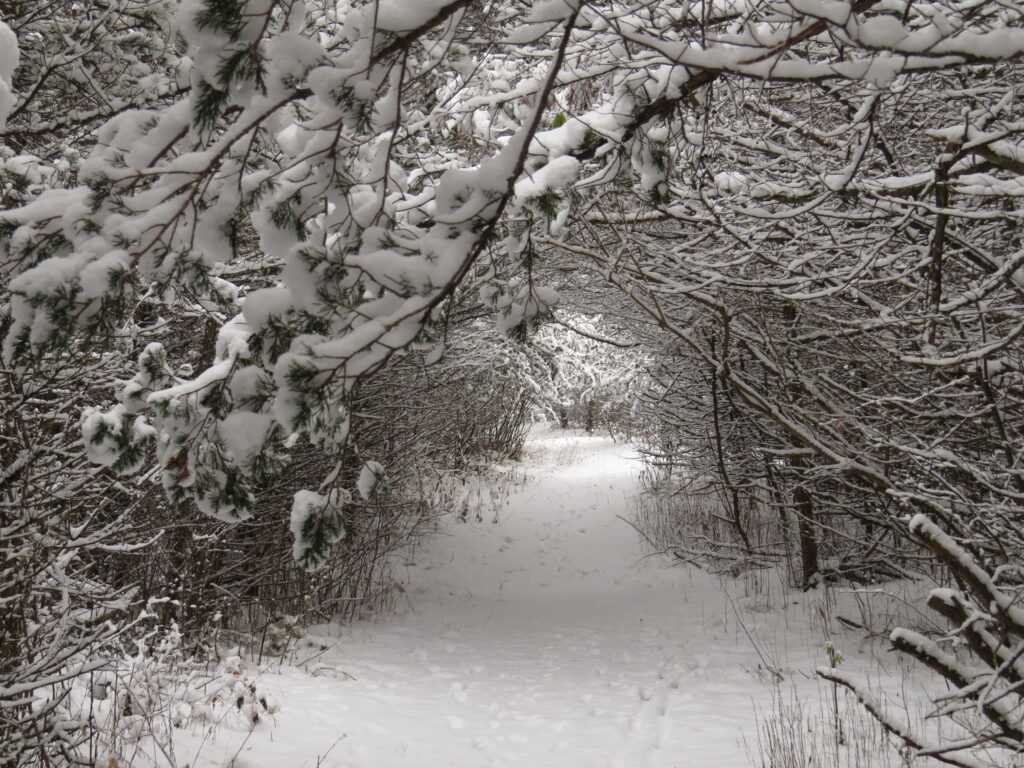
Each tree, structure, and plant held the snow in its own unique way.
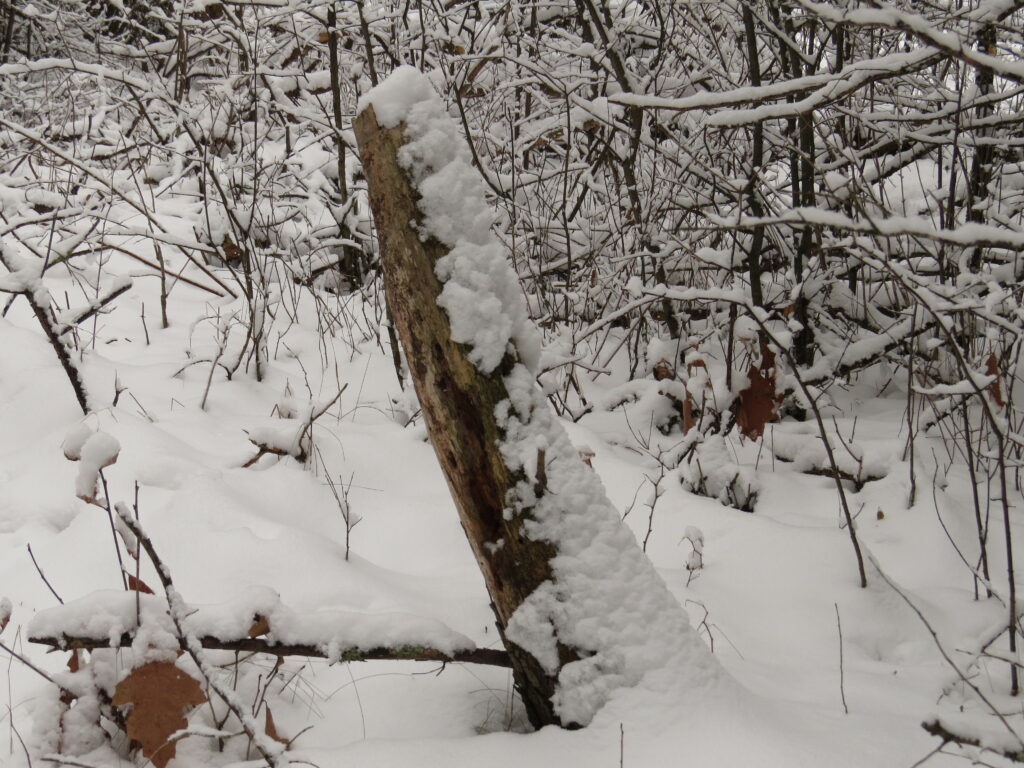
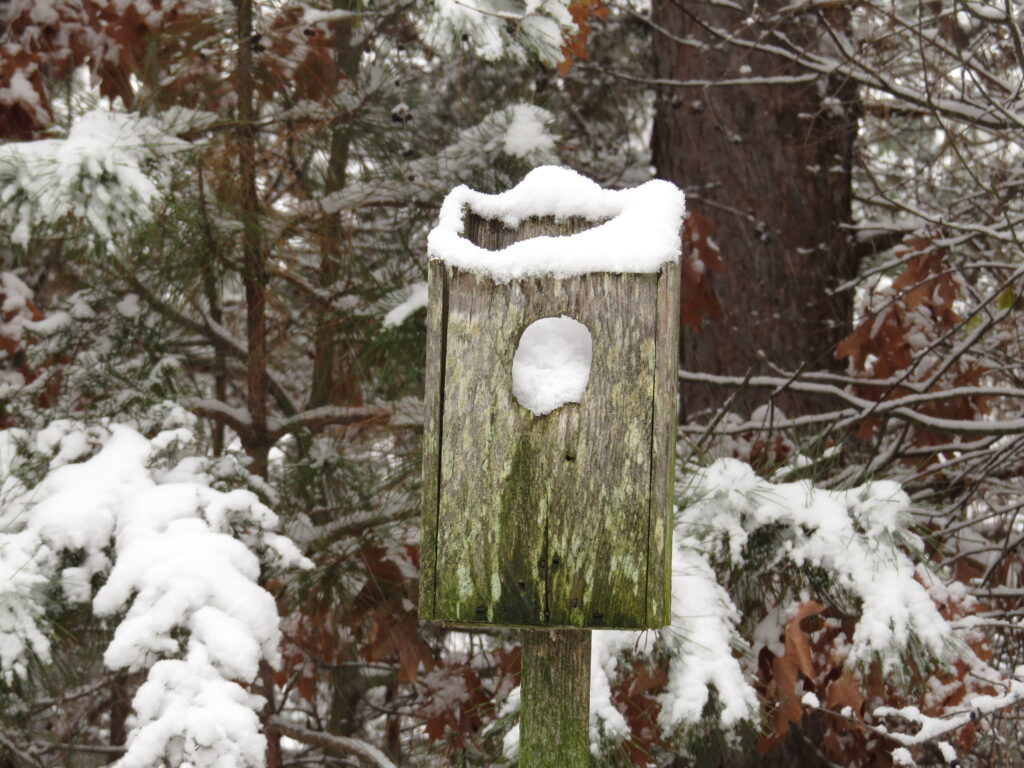
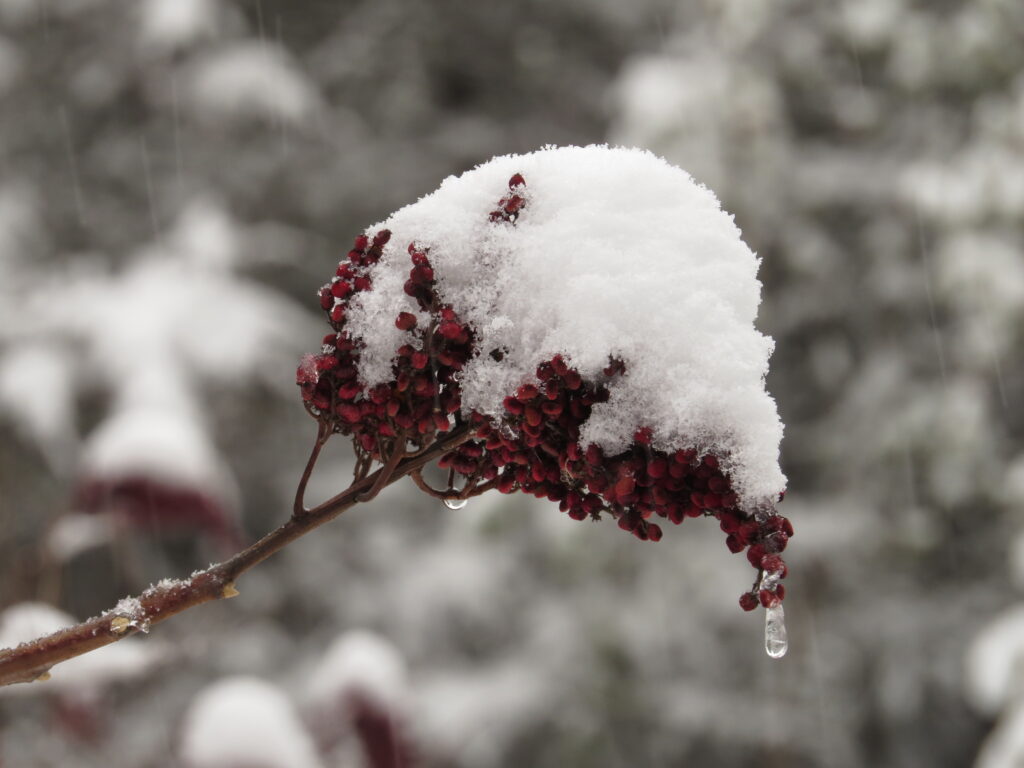
Snow in the North is a way of life. I cannot help but smile when I see snowflakes drifting from the sky. It is still a child-like wonder to me. But there are plenty of distractors, disdainers, railers, and complainers. How do you ‘wear’ the snow? And how is the snow an analogy for the things we carry, the burdens we unwillingly bear? It doesn’t have to be ‘snow in the North’ that ‘shouldn’t be’ according to us—it can be ‘the government,’ ‘the libs,’ ‘MAGAs,’ ‘the church,’ ‘heathens,’ ‘the super wealthy,’ ‘poor people’—all a realistic, present, integral part of ‘the way of the world.’ We all have our own ‘scapegoats’ that bear the burden of our own burdens, knowingly or unknowingly. We want to shake them off onto somebody or something else. It seems easier that way. But the snow shows us our tracks. We are accountable to ourselves for the burdens we find draped across our shoulders and for the journeys we take in life. And that brings me back to my acceptance of the anomalies of life—those ‘out-of-the-normal’ norms. As prevalent as the struggle is for each and every one of us, I now regard it as our work—the spiritual work of our lives. It takes the pressure off of us in a way, while at the same time, our struggle-work becomes our very own—our power is not co-opted or controlled by the other person, the media, the government, the priest, boss, or partner. No need for scapegoats. It’s just me and Thee. We are beautiful and strong, and the snow is not finished with us yet.